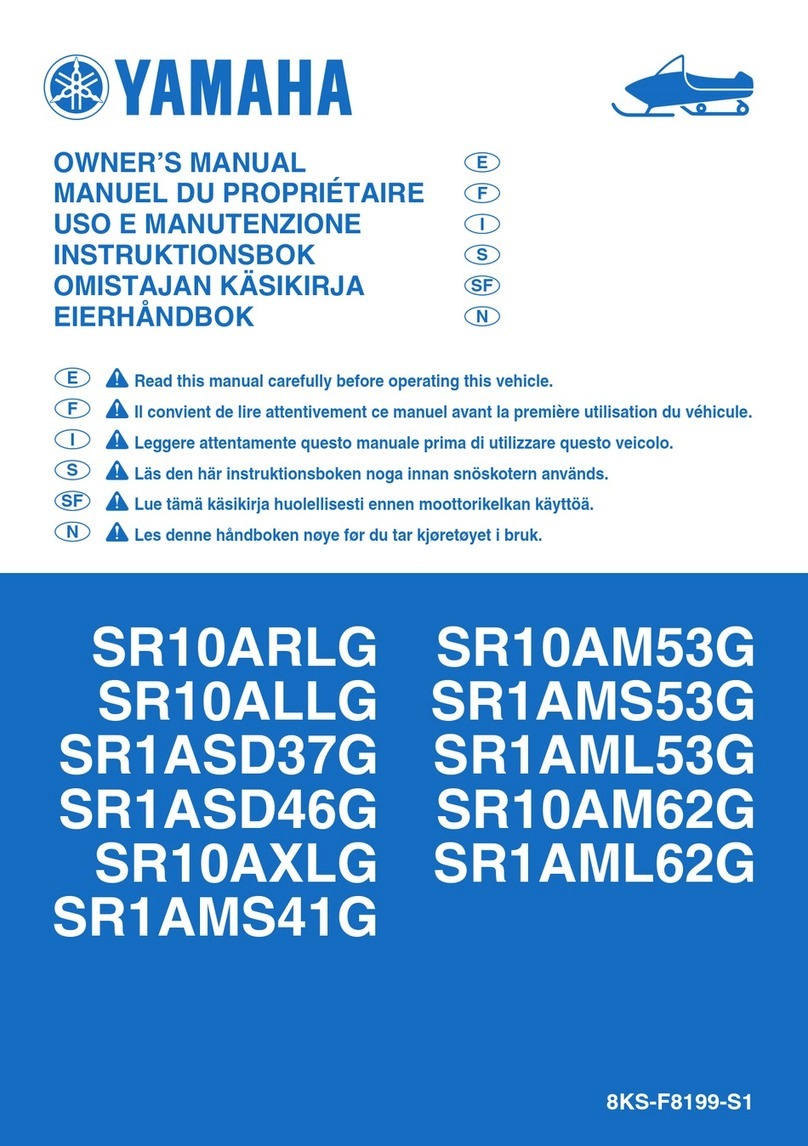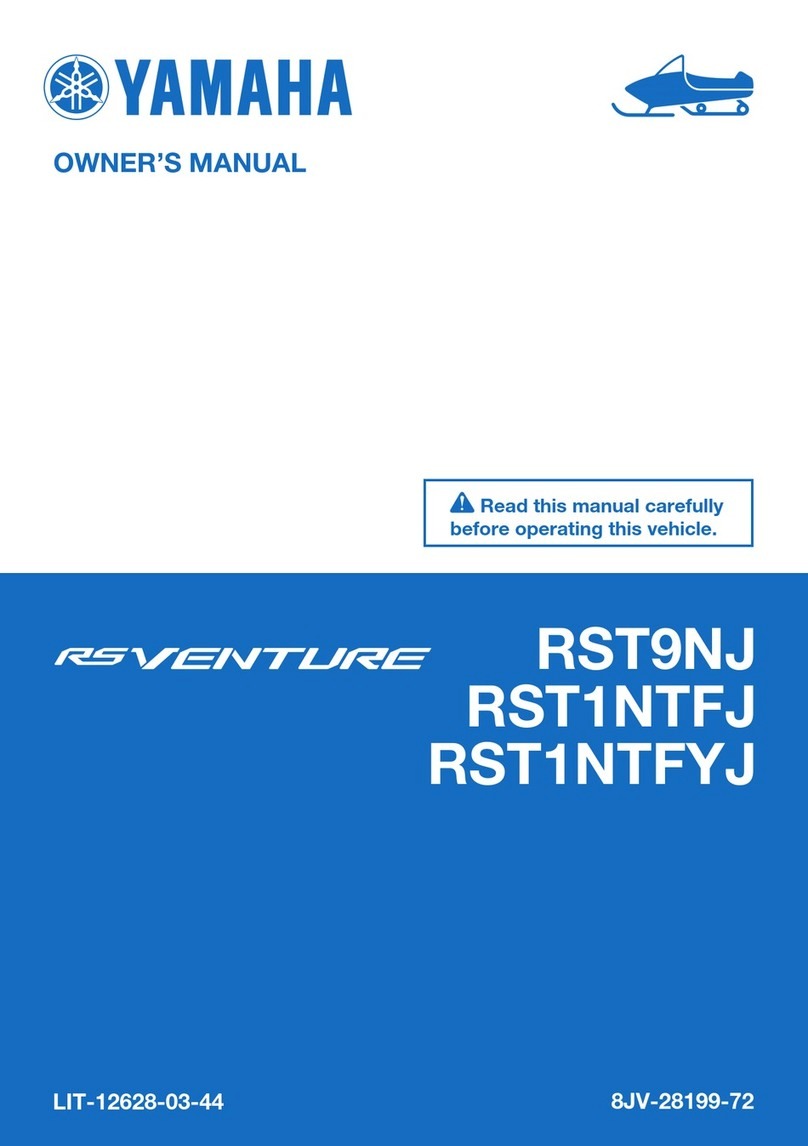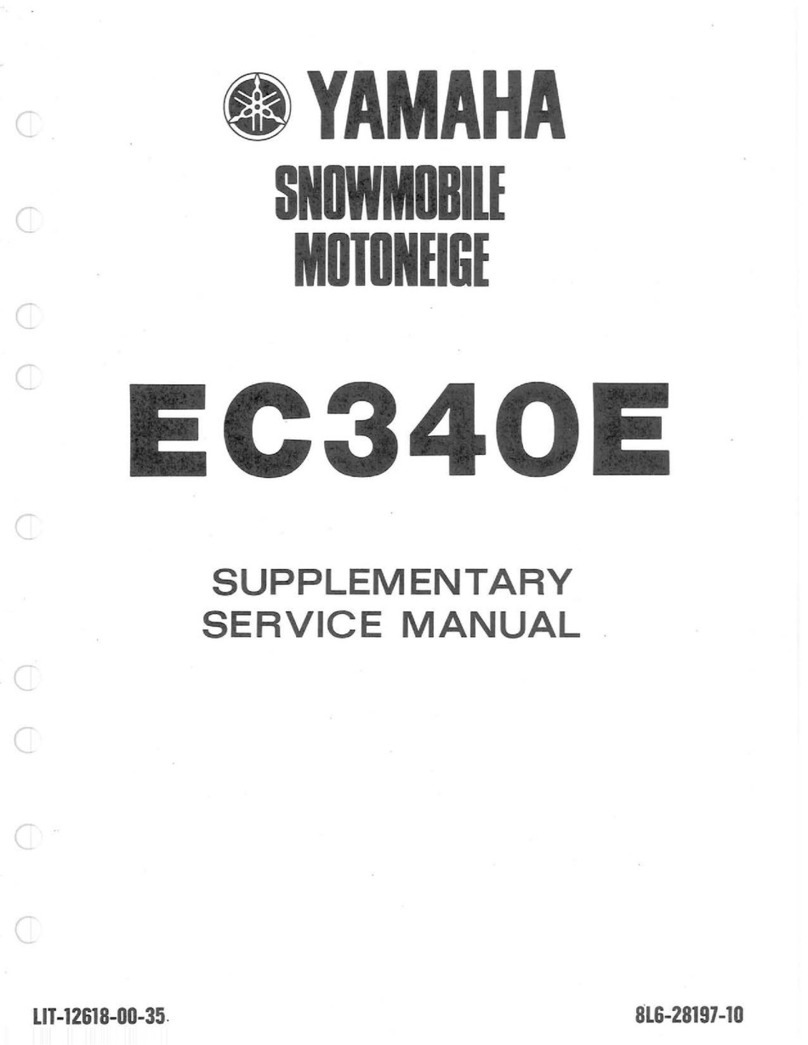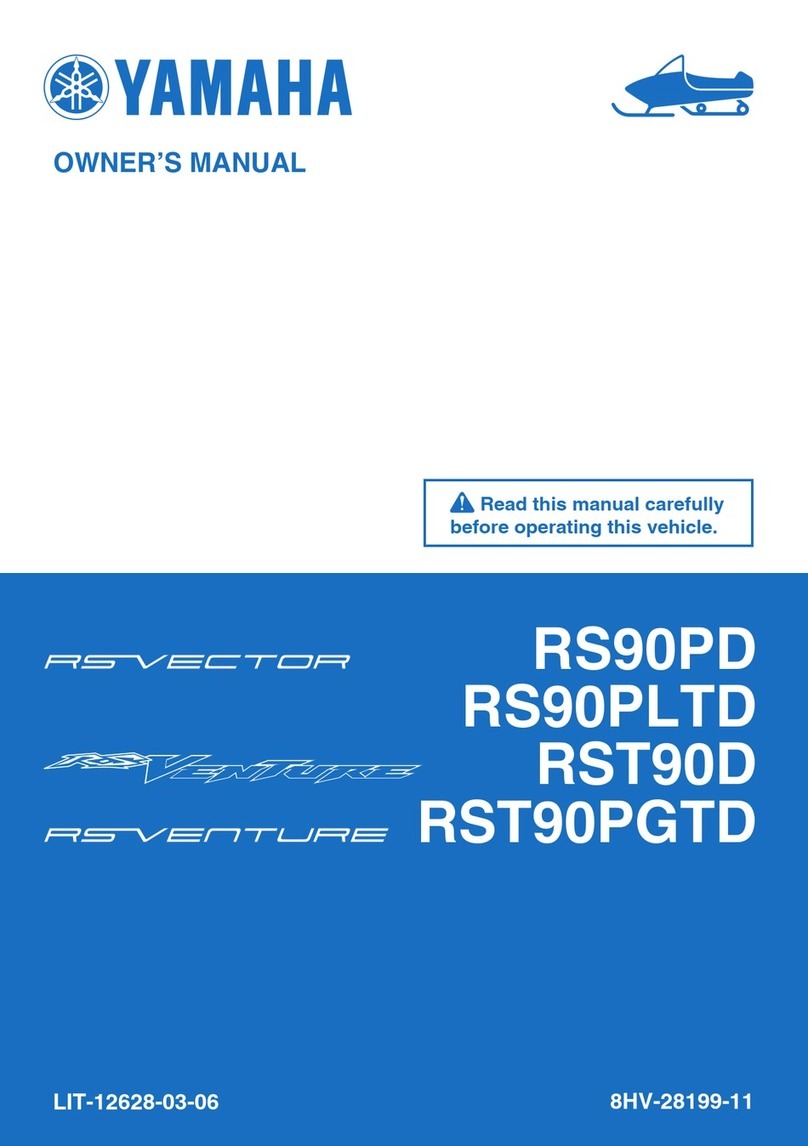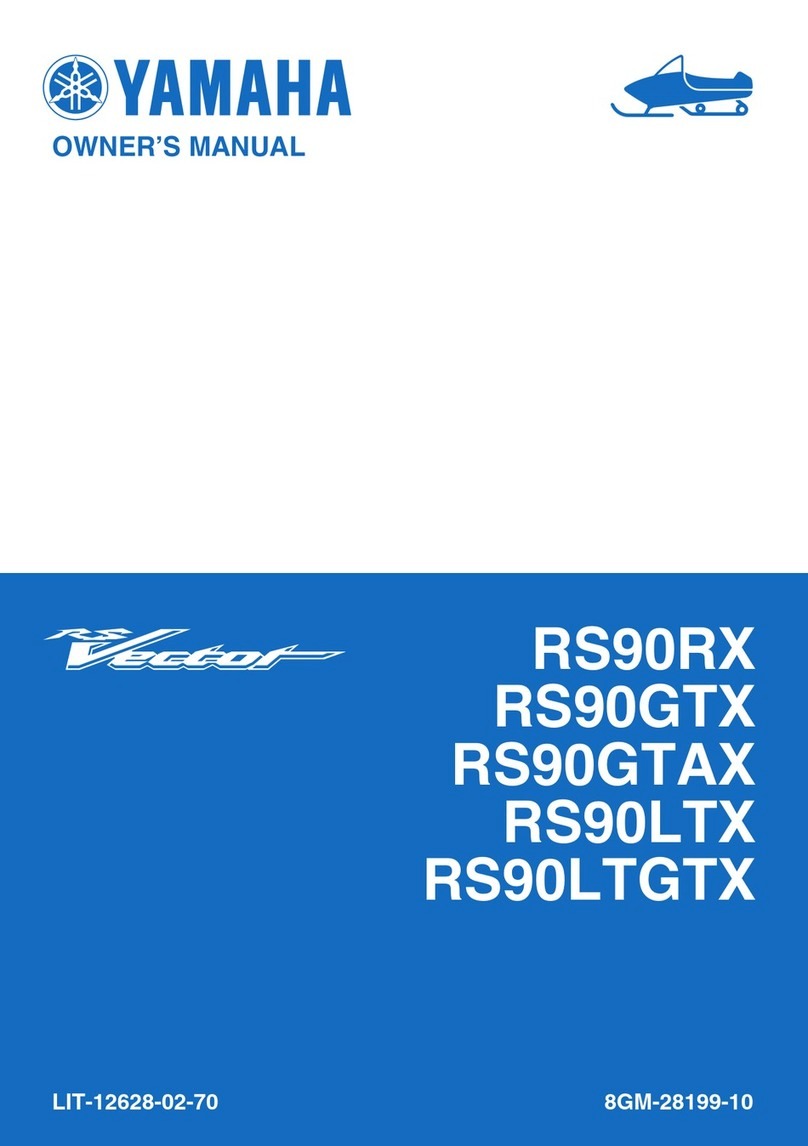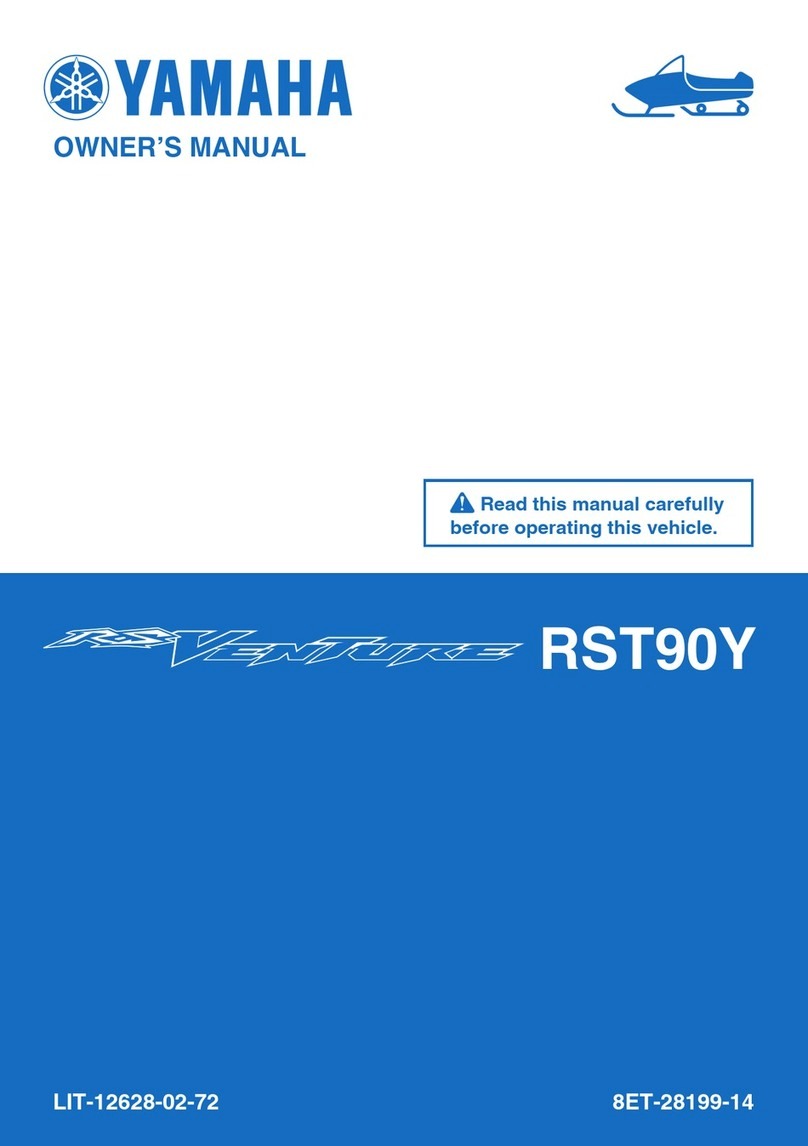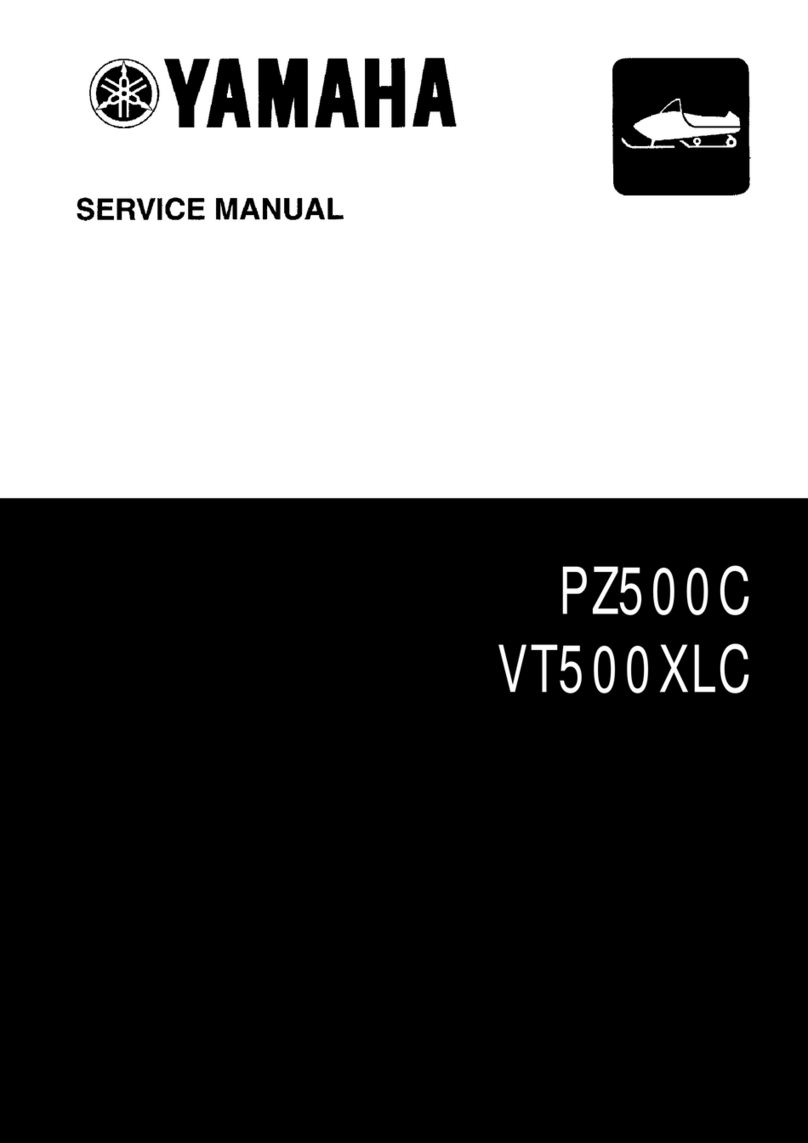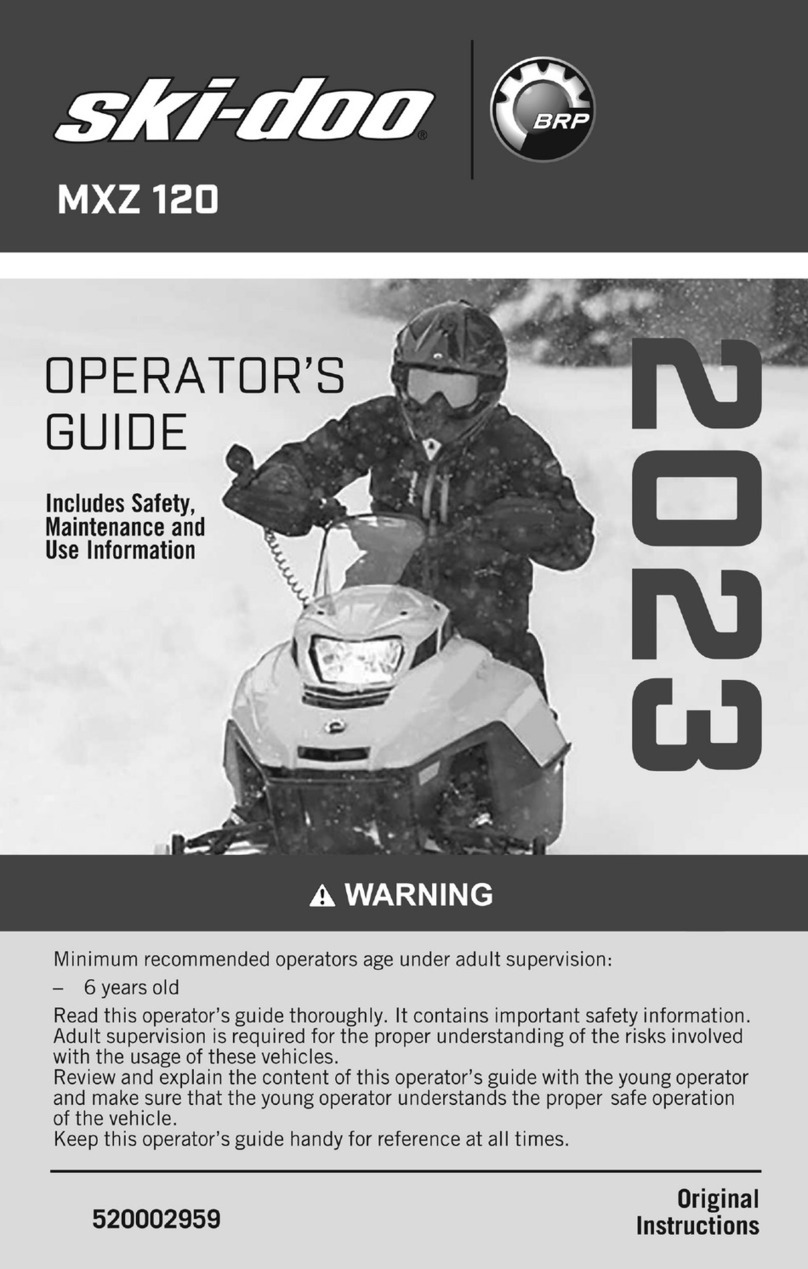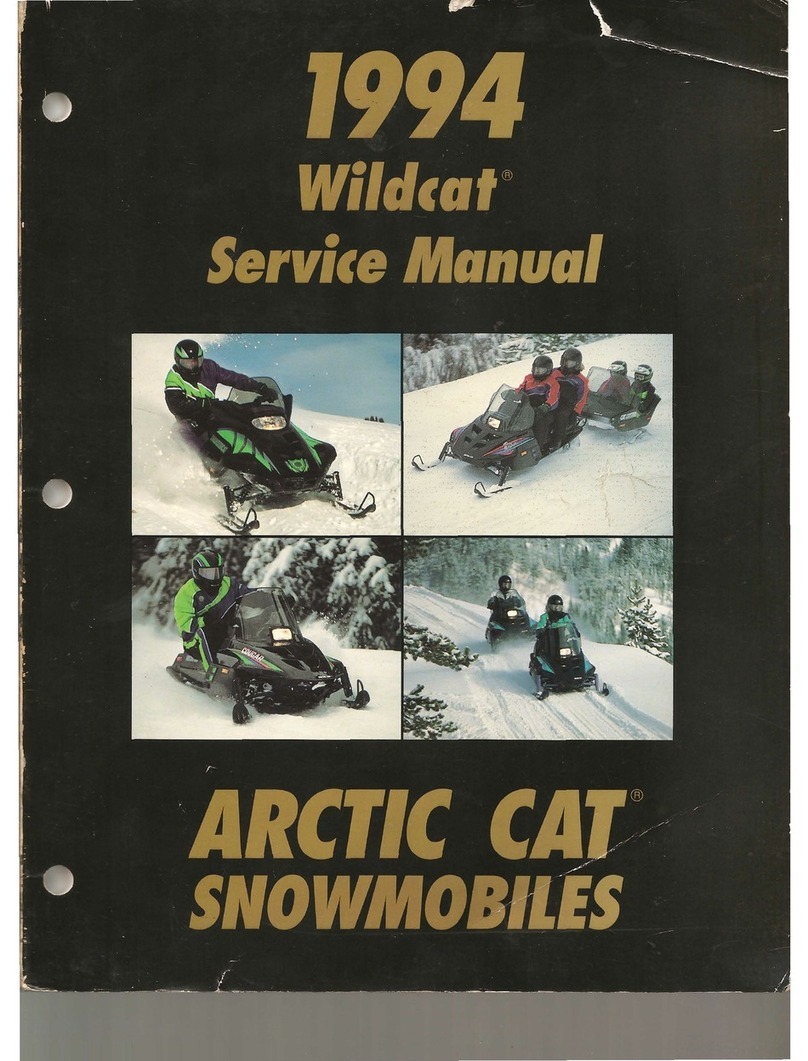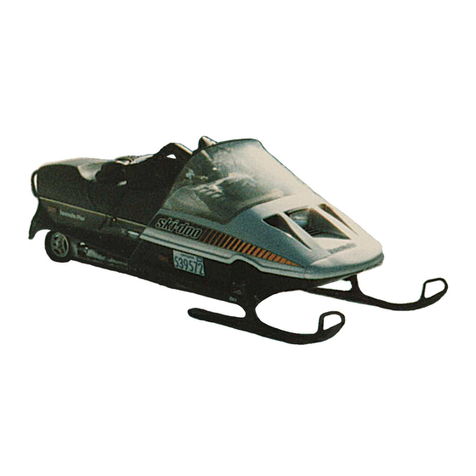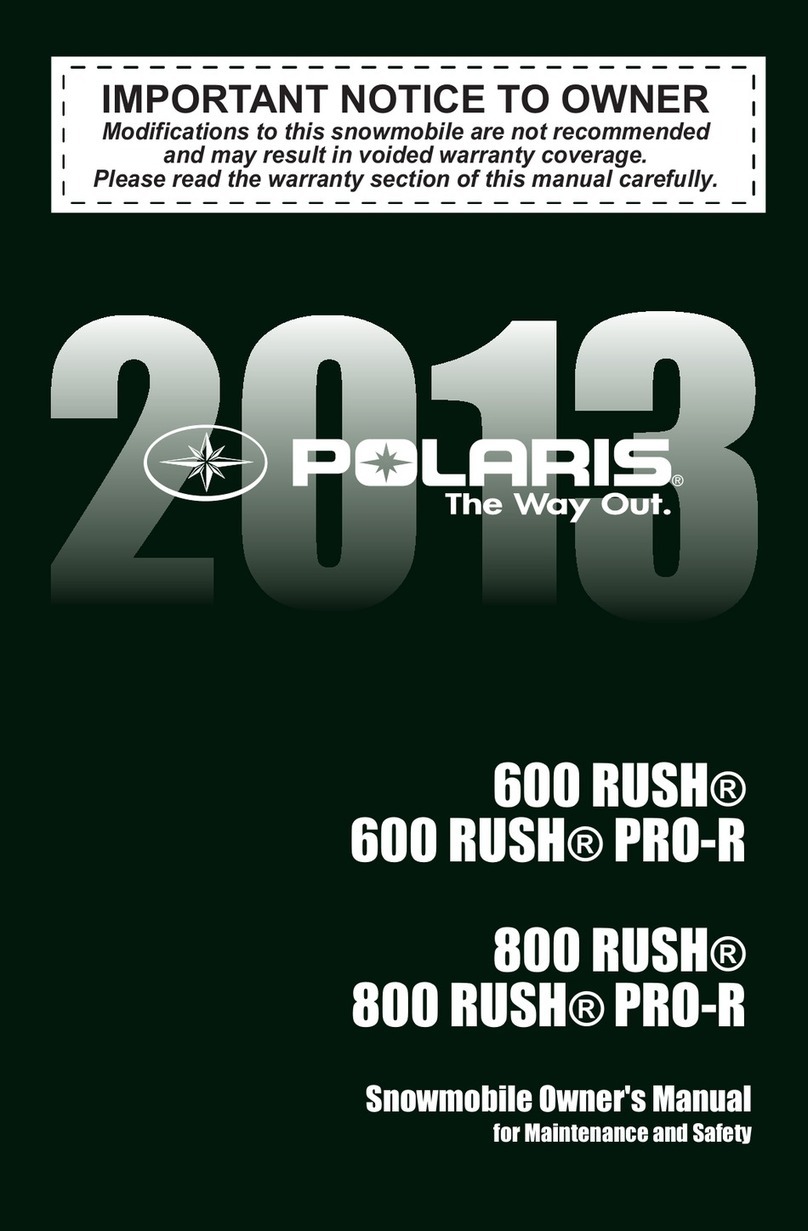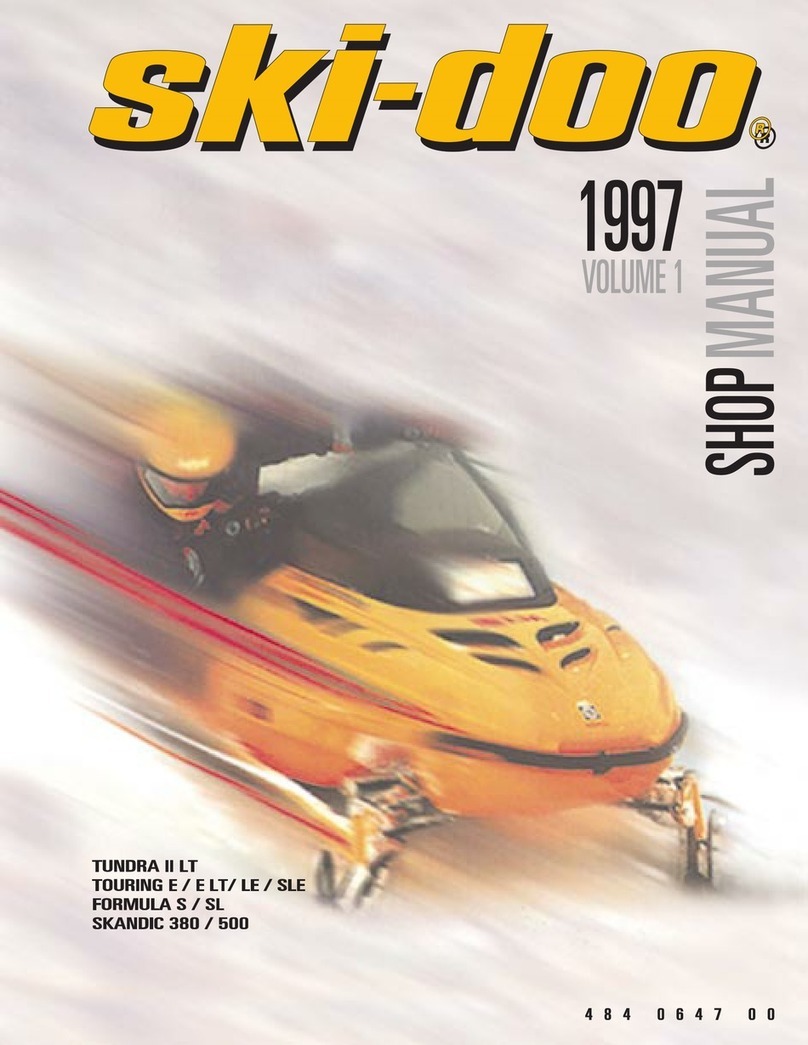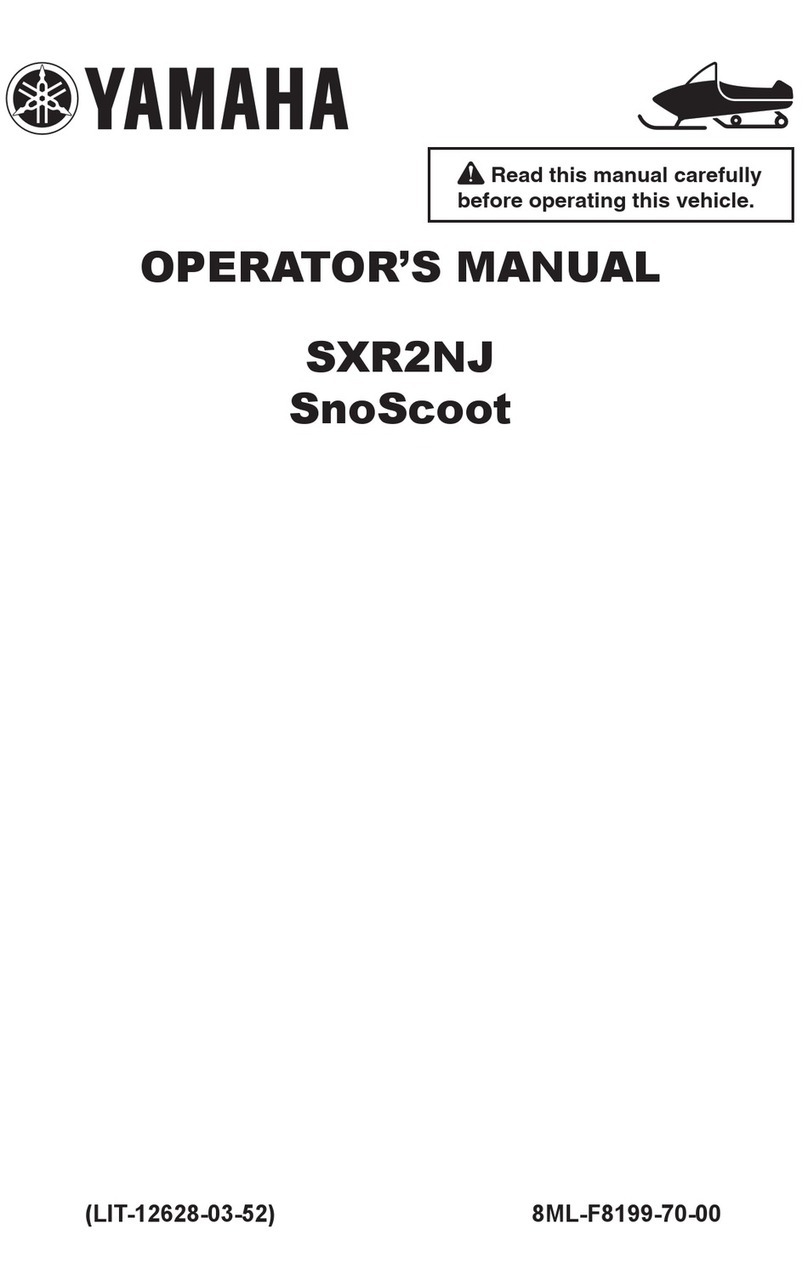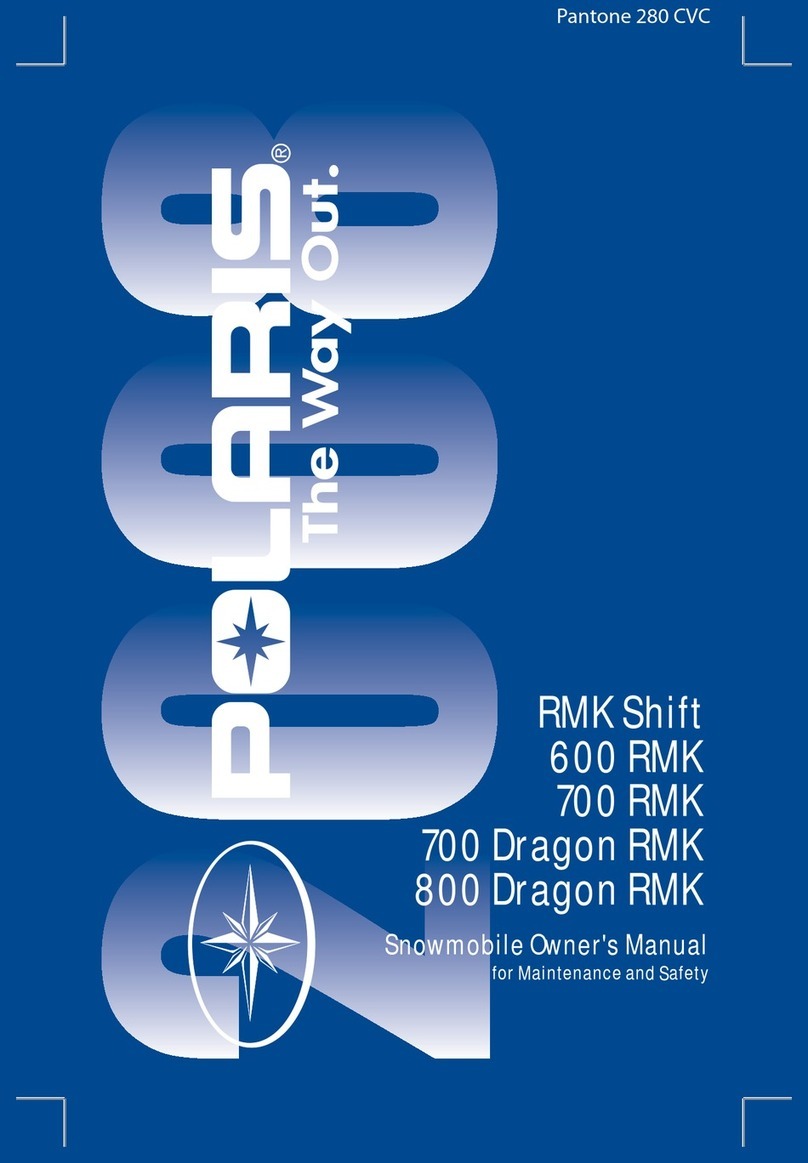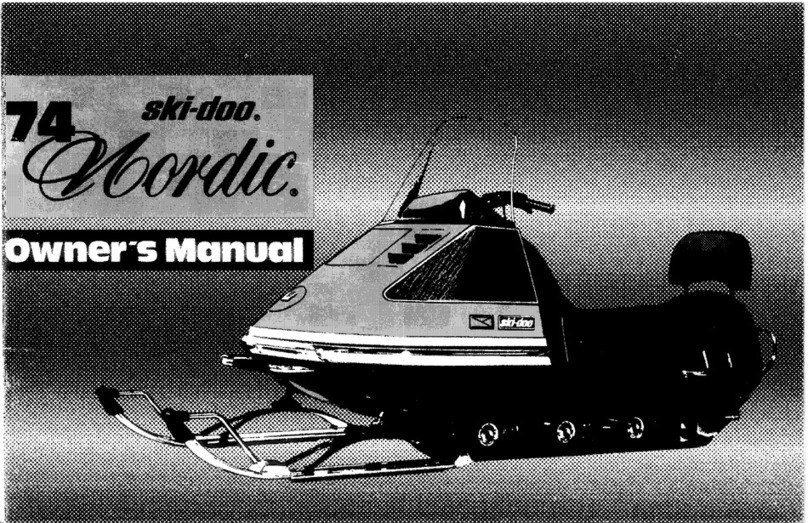
4
Getting Ready to Operate the
SRX120 Safely
NOTE: This section and Operating
the SRX120 section must be read
and explained to the child/operator
by the owner/parent/guardian. Refer
to Control Locations or the snowmo-
bile while explaining this section.
Like most boys and girls, you are anx-
iously waiting to drive the snowmobile.
Remember that the snowmobile is not a
toy. It must be driven carefully at all
times!
First, you must understand the controls,
know where the controls are, and know
how to use them correctly.
A. BRAKE LEVER — To slow
down or stop the snowmobile, the
brake lever should be pulled
(squeezed) toward the handlebar
grip.
NOTE: When the brake is being
used, the throttle lever must be in
the idle (released) position.
B. THROTTLE LEVER — Controls
the speed of the snowmobile. The
closer the throttle control lever is to
the handlebar grip (the more it is
squeezed), the faster the snowmo-
bile will go.
C. IGNITION SWITCH — When
the key is in the OFF position, the
engine will neither start nor run. If
the key is in the RUN position, the
engine will start and run.
D. EMERGENCY STOP SWITCH
— If something happens that you do
not understand or if there is an emer-
gency, move the emergency stop
switch to the OFF (down) position to
immediately stop the engine.
E. TETHER SWITCH — The
engine will neither start nor run
unless the tether switch cap is con-
nected to the tether switch located
on the top right-hand side of the con-
sole. The tether cord MUST BE
clipped to the operator’s right wrist
before attempting to start the engine.
Second, you must check several things
every time before the engine is started.
A. Make sure the brake lever works
properly (moves freely) by pulling
(squeezing) the brake lever and
releasing it several times.
B. Make sure the throttle lever works
properly (moves freely) and that it
snaps back to the idle position
quickly when it is released. The idle
position is when the throttle lever is
farthest away from the handlebar
grip. If the throttle lever does not
snap back quickly, the engine must
not be started and the throttle system
must be repaired.
C. Make sure that you have enough
clothes on to keep yourself warm but
NEVER wear clothes such as long
or loose scarves or long shoe laces
that could get caught in a moving
part of the snowmobile.
Third, make sure that you can answer yes
to all of the following questions before
each ride.
A. Do you have permission from the
owner or parent or guardian to oper-
ate the snowmobile?
B. Do you have an approved safety hel-
met on?
C. Are you wearing something to pro-
tect your eyes (such as goggles or a
visor)?
D. Are you dressed warmly enough?
E. Has your parent or guardian checked
to make sure you have enough gaso-
line?
F. Do the throttle lever and brake lever
move freely?
G. Are all shields and covers in the
right place and is the hood securely
latched?
H. Do you have a safe area to ride in? Is
the area free of rocks, wires, trees,
traffic, etc.?
Downloaded from ManualsNet.com search engine




